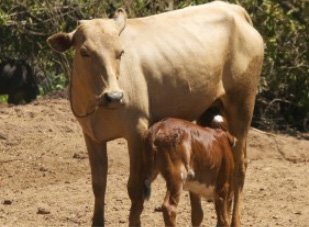Guruji on Om & Mandukya Upanishad

OM or AUM is Pranava – the cosmic sound – the first vibratory sound that emanated as the seed of creation. It is the elemental sound from the beginning of the universe and from which the entire universe was created. It is the background hum heard from the universe and from everything in existence. It is the most common yet most powerful sound.
The symbol ‘Om’ is the greatest mystical symbol and signifies the Complete – the Absolute. Om is a Bija-Mantra for all other Mantras. The Mandukya Upanishad – as revealed by the ancient Rishi Manduka – explains the significance of AUM. It is said that for a true seeker, the study and understanding of Mandukya Upanishad is sufficient for knowing the Truth – realising the Self – Om – the Absolute.
All Upanishads contain wisdom from the higher realms of the cosmos. They are direct revelations by ancient Rishi-Munis about the nature of Reality. Yet, it is said that the Mandukya Upanishad is a complete treatise for the direct revelation of ‘Om’. It is stated: “Mandukyam ekam eva alam mumukshunam vimuktaye” – which means: “for a true seeker the Mandukya alone is enough to grasp the essence and meaning of Reality, and thus be liberated”.
Mandukya Upanishad reveals the depths of human nature; it contains only twelve Mantras in which the whole knowledge of all Upanishads is packed. It starts by declaring, “Om ityetadaksharam idam sarvam, tasyopavyakhyanam bhutam bhavat bhavishyaditi sarvam omkara eva” – which means “Om! This Imperishable Word is the whole of this visible universe. What has become, what is becoming, what will become –all of this is OM. And what is beyond these three states of the world of time – that too, is OM.
This extraordinary world consists of mental states or ideas, and ideas depend upon words for their expression. The pronunciation of all words or sounds uttered by human beings are contained in the word AUM (A, U, M). The various parts of the vocal organ which are used to utter all sounds are used in the pronunciation of AUM.
AUM is the background of all sounds, and in their varied forms they give rise to the words used in any language. The sound A is the beginning of all sounds, and comes from the throat when the mouth opens to utter any word. The sound U is the rolling forward of the urge created in the throat and ends with the closing of the lips when the final sound M is uttered. So, we see how AUM is said to include all the sounds. The base of all sounds is AUM, and the basis of this phenomena is Brahman. Therefore, it is said that Brahman is AUM.
As already said, Om is a cosmic vibration, and not just a sound, a chant, a word or a part of human language. It is something which exists by its own right. We cannot create it by chanting ‘Om’. Rather, what we do is produce a vibration which is in tune with the cosmic vibration. When we chant Om, we establish a connection with the Brahman, that which is Absolute and which manifests itself as a sound-vibration in the form of ‘Om’.
The Upanishad explains the symbolic significance of OM or AUM and its correlation with the four states of consciousness, viz: the wakeful consciousness, the dream state, the state of deep sleep or dreamless sleep and the state of transcendental consciousness in which all divisions and duality disappears and the Self alone exists in its pure state, all by itself.
The syllable AUM is verily all this; the past, the present and the future are AUM, and That beyond these three is also AUM. The Brahman is indeed all this. This Self in us is also Brahman; and this Self has four planes.
Vaisvanara (Cosmic man) characterised by the gross body or ‘sthula sarira’ is the first stage. Wakeful, outwardly conscious, with seven limbs and nineteen mouths, enjoyer of the gross objects.
Taijasa (dream consciousness) characterised by the subtle body or ‘suksma sarira’ is the second stage. Dreaming, inwardly conscious, with seven limbs and nineteen mouths, enjoyer of the subtle objects.
Prajna (deep sleep state) characterised by the blissful causal body, is the third stage. Seeking no desires, dreaming no dreams, unified into the mass of greater consciousness, full of bliss, with face turned towards Chetasa (intelligence).
Atman (the Self), the omniscient, inmost dweller, invisible, incomprehensible, without qualities, beyond all thoughts, indescribable, peaceful, auspicious, without duality, is the fourth stage. Conscious neither internally nor externally, nor either way, with neither ordinary consciousness, nor the greater and deeper consciousness, that Self is to be known.
The same Atman is AUM among the syllables, each syllable in the word AUM i.e: A – U – M – is a stage.
The wakeful Vaishwanara is the first letter ‘A’, being the first letter and all-pervasive. The dreaming Taizasa is the second letter ‘U’; it is superior and situated in the middle. In the world of deep sleep, Prajna, is the third letter ‘M’, being the limit and the end of all diversity.
The fourth state is without parts and entanglements, not bound to this world; it is auspicious and non-dual. Thus, the form of AUM is the Self itself, and He who knows this enters into his Self by himself.
With Love and Blessings, Guruji.
Help Us Now

Donate to Surabhivana Gaushala to save and protect Indian Cow Breeds.
All donations are exempt under Section 80G of the Income Tax Act, 1961. All donation receipts shall be mailed to the address given by the donor or may be collected in person, at request.
Click the below button to donate through credit cards/debit cards or Net Banking via Razor Pay.
